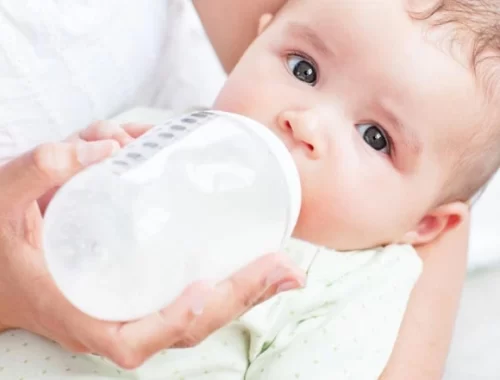
How to Properly Bottle Feed Your Baby?
Bottle feeding is an integral part of caring for your baby, and it’s essential to do it correctly to ensure that your little one gets the nutrition and comfort they need. In this blog post, we’ll provide a comprehensive guide on how to properly bottle feed your baby, covering everything from choosing the right bottle and nipple to sterilizing and cleaning the bottles. With these tips and techniques, you can confidently feed your baby and create a comfortable bonding experience for you and your little one.
Choosing the Right Bottle and Nipple
The first step in correctly bottle feeding your baby is choosing the right bottle and nipple. There are a variety of bottles and nipples available on the market, so it’s essential to choose ones that are appropriate for your baby’s age and feeding needs.
Newborns typically use smaller bottles with slower-flow nipples, while older babies may need larger bottles with faster-flow nipples. Look for bottles and nipples that are BPA-free and easy to clean, and consider trying different types until you find one that your baby is comfortable with.
Preparing the Formula:
Once you’ve chosen the right bottle and nipple, it’s time to prepare the formula. Follow the instructions on the formula packaging carefully, measuring the appropriate amount of water and powder to create the correct concentration. Use clean and sterilized equipment when preparing the formula to prevent contamination.
Positioning Your Baby:
When it’s time to feed your baby, position them properly to ensure that they can feed comfortably and safely. Hold your baby in a semi-upright position, supporting their head and neck with one hand while holding the bottle with the other. Make sure the nipple is always filled with formula and tilted upwards to prevent air from entering the baby’s stomach.

Feeding Your Baby:
When you’re ready to start feeding, gently touch the nipple to your baby’s lips to encourage them to open their mouth. Once they begin to suck, hold the bottle at a 45-degree angle to allow the formula to flow smoothly. Avoid propping the bottle in your baby’s mouth, which can lead to choking or ear infections.
Pay attention to your baby’s cues while feeding, and take breaks as needed to allow them to rest or burp. Don’t force your baby to finish the entire bottle if they’re not hungry, as this can lead to overfeeding and discomfort.
Burping Your Baby:
After your baby finishes feeding, it’s essential to burp them to release any trapped air in their stomach. Hold your baby upright against your chest, supporting their head and neck, and gently pat or rub their back until they burp.
Sterilizing and Cleaning the Bottles:
After each use, it’s important to sterilize and clean the bottles to prevent bacteria from growing and to ensure that they’re safe for your baby to use. You can sterilize bottles and nipples by boiling them in water for 5-10 minutes, using a steam sterilizer, or using a sterilizing solution.
Clean the bottles and nipples with warm, soapy water after each use, using a bottle brush to clean the inside and outside of the bottle and nipple. Rinse the bottles and nipples thoroughly, and allow them to air dry before storing them.
Bottle-feeding your baby is an important and rewarding experience, and by following these tips and techniques, you can create a relaxing and bonding moment for both you and your little one. Remember to choose the right bottle and nipple, carefully prepare the formula, position your baby properly, and observe their cues while feeding. Always burp your baby after feeding, and thoroughly sterilize and clean the bottles to prevent contamination.
You May Also Like

Feeding Your Baby On The Go: 7 Essential Tips
2022-03-30
Top 8 Tips to Help Your Newborn Sleep
2022-08-03

